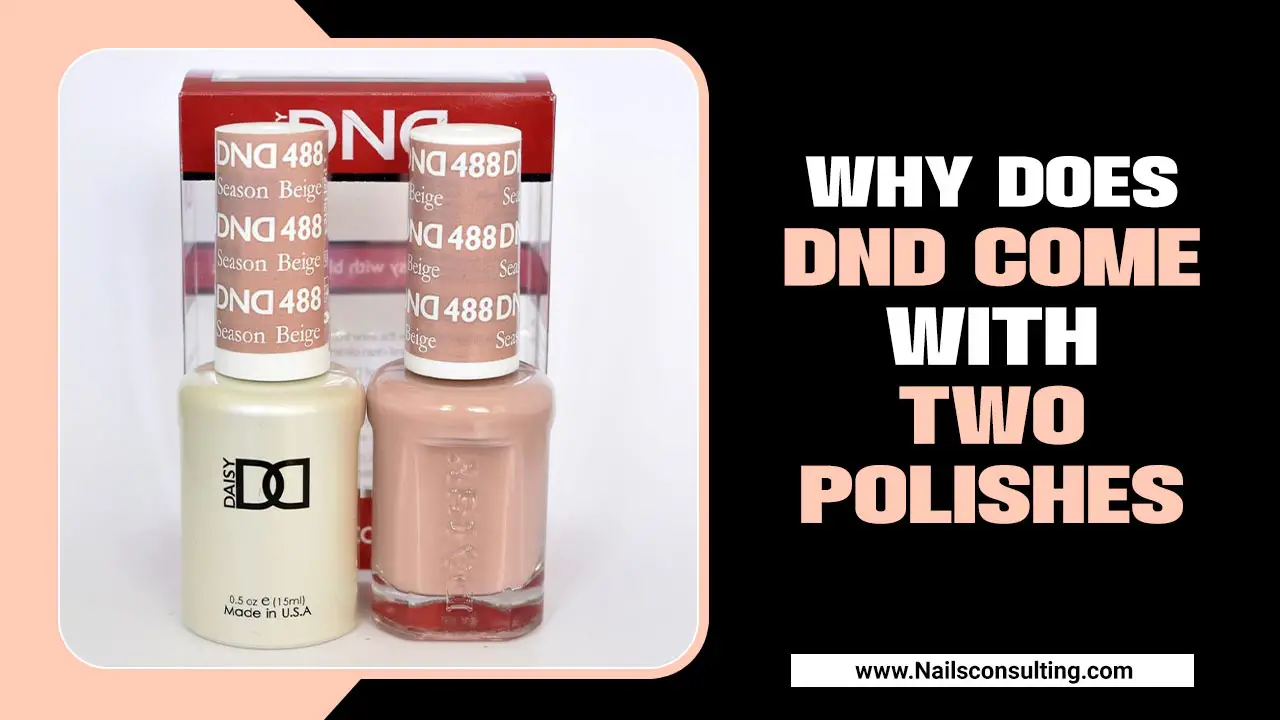Don’t let gel nail chips ruin your manicure! Learn simple, proven techniques for a long-lasting, flawless finish that stays put for weeks. Discover expert tips and easy steps to keep your gel nails looking salon-perfect every day.
Gel nails are a dream for many of us – they’re shiny, durable, and can last for weeks. But what happens when those beautiful gel manicures start to chip just a few days in? It’s frustrating, right? You spend time (and maybe money!) getting them done, only to see that dreaded chip appear. Don’t worry! You absolutely can achieve long-lasting gel nails without those annoying chips. We’re going to walk through exactly how to prevent them, step-by-step, so you can enjoy gorgeous, chip-free nails for as long as possible. Get ready to say goodbye to early chipping and hello to a perfect manicure!
Understanding Why Gel Nails Chip
Before we dive into prevention, let’s quickly touch on why chips happen. It’s not usually a mysterious force; it’s often a combination of preparation, application, and daily wear. Think of it like building a sturdy house – if the foundation isn’t solid, the whole structure is at risk. For gel nails, the “foundation” includes how well the natural nail is prepped, the quality of the products used, and how gently you treat your hands.
Common culprits for chipping include:
- Improper nail preparation (not cleaning or dehydrating the nail).
- Applying the gel polish too thickly.
- Not capping the free edge (that’s the tip of your nail!).
- Exposure to harsh chemicals or intense heat shortly after application.
- Physical trauma to the nails (like using them as tools!).
- The age and quality of the gel polish and lamp.
The Ultimate Guide: How to Prevent Chipping Gel Nails
Getting that perfect, chip-free gel manicure is all about attention to detail at every step. We’ve broken down the process into easy-to-follow stages. Follow these tips, and you’ll be well on your way to a resilient gel mani!
Step 1: Nail Preparation is Key!
This is non-negotiable! A clean, smooth canvas is essential for gel adhesion. Think of it as priming a wall before you paint it. If the wall is dusty or greasy, the paint won’t stick well.
- Cleanse and Disinfect: Start with clean hands. Wash them thoroughly and then use an antiviral or antibacterial cleanser.
- Push Back Cuticles: Gently push back your cuticles with a cuticle pusher or an orangewood stick. Avoid cutting them unless you’re experienced, as nicks can lead to lifting and chipping.
- Buff Your Nails: Lightly buff the surface of your natural nails with a fine-grit buffer (around 180-240 grit). This removes any shine and creates a slightly matte surface for the gel to grip onto. Don’t over-buff, as this can thin your natural nail.
- Dehydrate, Dehydrate, Dehydrate: This is super important! Use a nail dehydrator or cleanser wipe. It removes natural oils and prevents moisture from interfering with the gel bond. Apply it to the entire nail plate. Some people even use a primer for extra grip, but a good dehydrator is usually sufficient for beginners.
Step 2: Applying Your Base Coat Wisely
The base coat is the foundation for your gel polish color. It protects your natural nail and is crucial for adhesion.
- Thin is In: Apply a thin, even layer of your gel base coat. Avoid getting it on your cuticles or skin.
- Seal the Free Edge: This is a game-changer! Before you cure your base coat, lightly brush the very tip of your nail (the free edge) with the base coat. This “seals” the edge and prevents water or debris from getting underneath, which is a major cause of chipping.
- Cure Properly: Follow the manufacturer’s instructions for curing time under your UV or LED lamp.
Step 3: Color Application – Less is More!
Thick layers of gel color are more prone to wrinkling, lifting, and chipping. Patience here pays off!
- Thin Coats: Apply your gel color in thin, even coats. Two or three thin coats are always better than one thick one for durability.
- Even Coverage: Ensure you have even coverage without flooding your cuticles. If gel gets onto your skin, wipe it away with an orangewood stick dipped in isopropyl alcohol before curing. Once cured, it’s much harder to remove and can cause lifting.
- Seal the Free Edge (Again!): Just like with the base coat, cap the free edge with each color coat. This adds another layer of protection.
- Cure Each Layer: Cure each color coat according to your lamp’s instructions.
Step 4: The Crucial Top Coat
Your top coat is the armor of your gel manicure. A good top coat provides shine and protection against chips and scratches.
- Thin & Even Application: Apply a thin, even layer of your gel top coat.
- Cap the Free Edge: Yes, we’re saying it again! Cap the free edge meticulously. This is perhaps the single most effective way to prevent chips.
- Consider Different Top Coats: There are different types of top coats. Some are “no-wipe” (meaning they don’t leave a sticky residue after curing), while others require wiping with isopropyl alcohol to remove the tacky inhibition layer. Whichever you use, ensure it’s fully cured.
- Full Cure: Ensure your top coat is fully cured for the recommended time. Under-curing is a common cause of premature dullness or chipping.
Step 5: Post-Application Care & Maintenance
Your gel manicure is on, but your job isn’t entirely done! How you treat your nails daily makes a big difference.
- Avoid Harsh Chemicals: Wear gloves when doing chores like washing dishes, cleaning with bleach, or gardening. These chemicals can break down the gel polish over time.
- Hands Off as Tools: Try not to use your nails as tools to open cans, scrape things, or pry. This is a fast track to chips and breaks.
- Moisturize Regularly: Keep your cuticles and the skin around your nails hydrated with cuticle oil or a good hand cream. Dry cuticles can lead to cracking and lifting around the nail edge.
- Be Gentle: When typing or doing everyday tasks, try to use the pads of your fingers rather than the tips of your nails.
- Avoid Extreme Heat: Prolonged exposure to very hot water (like long hot baths or saunas) can sometimes soften the gel and make it more susceptible to damage.
Choosing Quality Products for Longevity
You might have heard that quality matters, and it really does when it comes to gel nails. Using reputable brands for your gel polish, base coat, top coat, and even your lamp can significantly impact your manicure’s lifespan.
Here’s why it’s worth investing:
- Better Formulation: Higher-quality gels are formulated for better adhesion and flexibility, reducing the risk of cracking and chipping.
- Consistent Curing: Reputable lamps provide consistent UV or LED output, ensuring your gel cures properly every time. Inconsistent curing is a major cause of lifting and chipping.
- Compatibility: Gel systems are often designed to work best with their own brand of base and top coats. While some combinations work, sticking to a brand’s system can ensure optimal performance.
A good example of a brand that emphasizes quality and user experience is OPI GelColor, known for its professional-grade formulas that offer excellent adhesion and a long-lasting, chip-resistant finish when applied correctly. Another well-regarded option is Gelish Soak-Off Gel Polish, which is engineered for durability and ease of application, making it a favorite for both professionals and home users aiming for salon-quality results.
Troubleshooting Common Gel Nail Issues
Even with the best intentions, sometimes things don’t go perfectly. Here are a few common issues and how to address them to prevent chipping.
Lifting at the Cuticle or Free Edge
Why it happens: Often due to incomplete preparation, gel touching the skin, or not sealing the free edge.
Solution: Ensure you thoroughly push back cuticles, use dehydrator/primer, cap the free edge with every layer, and avoid getting product on the skin. If you notice a tiny bit of lifting early on, you might be able to carefully file it down and re-seal with top coat, but it’s often best to re-do the manicure if it’s significant.
Gel is “Bumpy” or Uneven
Why it happens: Applying gel polish too thickly.
Solution: Always apply thin, even coats. If your polish pools or looks thick, you’ve used too much. Wipe off and reapply a thin layer.
My Gel Isn’t Shiny After Curing
Why it happens: Incomplete curing or residue left on the surface.
Solution: Ensure you’re using the correct curing time for your lamp and polish. If your top coat is the type that leaves a sticky “inhibition layer,” ensure you wipe it off thoroughly with isopropyl alcohol (90% or higher) after curing. Some “no-wipe” top coats can also lose shine if over-cured.
Maintaining Your Gel Manicure: A Quick Comparison
To help you visualize the importance of each step, here’s a quick look at how different factors impact your gel nails’ longevity. This isn’t about perfection, but about understanding the best practices.
| Factor | Importance for Chip Prevention | Why it Matters |
|---|---|---|
| Nail Prep (Dehydration & Buffing) | ★★★★★ (Highest) | Removes oils and creates a surface for adhesion. Without it, gel lifts easily. |
| Sealing the Free Edge | ★★★★★ (Highest) | Creates a barrier against water and debris, preventing lifting from the tip. |
| Thin Coats of Gel | ★★★★☆ | Prevents cracking, wrinkling, and ensures proper curing. Thick coats don’t cure fully. |
| Proper Curing Time | ★★★★☆ | Ensures the gel polymerizes correctly, forming a hard, durable layer. Under-curing leads to weakness. |
| Top Coat Application | ★★★★☆ | Provides the final protective, chip-resistant layer. Must be applied evenly and cured fully. |
| Avoiding Harsh Chemicals | ★★★☆☆ | Chemicals can degrade the gel structure, leading to dullness, scratches, and potential lifting. |
| Using Nails as Tools | ★★★★★ (Highest) | Direct physical stress can easily cause chips and breaks. |
Tools You’ll Need for a Chip-Free Gel Manicure
Having the right tools makes all the difference. You don’t need a whole salon, but a few essentials will set you up for success.
- LED or UV Gel Lamp: Essential for curing gel polish. LED lamps cure faster.
- Gel Base Coat, Color Coat, and Top Coat: Quality products are key!
- Nail Buffer: A fine-grit buffer (180-240 grit) is perfect for gently buffing the nail surface.
- Cuticle Pusher or Orangewood Sticks: For gently pushing back cuticles.
- Nail Dehydrator: Crucial for removing oils and moisture.
- Isopropyl Alcohol (90% or higher): For final cleansing and wiping off inhibition layers if your top coat isn’t “no-wipe.”
- Lint-Free Wipes: For applying dehydrator and cleaning up mistakes. Regular cotton balls leave lint!
- Fine-grit Nail File: For shaping your natural nails before starting.
FAQ: Your Gel Nail Questions Answered
How long should gel nails typically last without chipping?
While results can vary based on lifestyle and nail care, a well-applied gel manicure, following all the prevention steps, should ideally last 2-3 weeks without chipping. Some may even last longer, around 4 weeks!
Can I use regular nail polish top coat over gel color?
No, this is a recipe for disaster and definitely won’t prevent chipping. Regular top coats are not designed to cure under a UV/LED lamp and will not bond with the gel color, leading to smudges, peeling, and rapid chipping. Always use a gel-specific top coat.
What if I notice a tiny chip on day 3? Should I just ignore it?
It’s tempting to ignore it, but that tiny chip can spread and lead to more significant damage or lifting. It’s best to address it gently. You might be able to carefully file down just that tiny rough edge and then re-apply a tiny bit of gel top coat to seal it and cap the edge again. If it’s a larger chip, it might be time to consider a gentle removal and reapplication.
Is it bad to use my nails to open things?
Yes, it is! Using your nails as tools puts immense pressure on the gel and your natural nail underneath. This is one of the quickest ways to cause chips, breaks, and lifting. Reaching for a designated tool (like a bottle opener or box cutter) might save your manicure and your nail!
How often should I moisturize my cuticles if I have gel nails?
Aim to moisturize your cuticles at least once or twice a day, especially after washing your hands. Consistent hydration keeps the skin around your nails supple, preventing it from drying out and cracking, which can indirectly lead to gel lifting or chipping at the nail edge.
Does the brand of gel polish really make a difference in preventing chips?
Yes, the brand and quality of gel polish can absolutely make a difference. Higher-quality gel formulas tend to be more flexible and adhere better, making them less prone to cracking and chipping. While you can often mix and match brands for base/color/top coats, using products from the same reputable brand system can often give you the most reliable results.
Can very hot water ruin a gel manicure instantly?
While very hot water won’t typically ruin a gel manicure instantly, prolonged and frequent exposure to extreme heat can soften the gel polish. This can make it temporarily more susceptible to dents, scratches, or even lifting. It’s a good idea to wear gloves when doing household chores involving hot water or steam.
Conclusion: Your Chip-Free Gel Nail Journey Starts Now!
Achieving beautiful, long-lasting gel nails without chips is totally within your reach! It all comes down to meticulous preparation, careful application of thin coats, sealing those edges, proper curing, and a little bit of post-application TLC. By following these proven steps, you’re not just applying polish; you’re building a durable, gorgeous manicure designed to withstand your daily life.
Remember, practice makes perfect. Don’t get discouraged if your first attempt isn’t flawless. Each time you do your gel nails, you’ll get a better feel for the product and the process. Embrace the journey, experiment with colors that express your unique style, and enjoy the confidence that comes with a perfect, chip-free gel manicure that lasts. Happy polishing!



